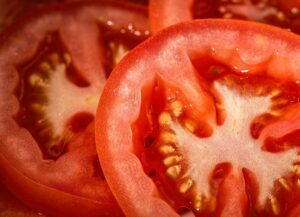María Villagrasa & Nuria García
During their transfer from the farm of origin young calves are exposed to new environmental conditions that can spread disease among them quite easily. This high disease prevalence could be related to the adverse effects of transport on the physiology, immunity and health of calves.
In order to provide further data on this possible relationship, a group of researchers from Wageningen University & Research (Netherlands) designed a study to investigate how a liquid diet (milk or electrolytes) previous to their transport to the grower, the duration of the trip (6 or 18 h), and the type of vehicle used (open or conditioned truck) affected the metabolic and physiological variables of young calves.
Relationship between transport, diet and physiological status
The researchers assumed that shorter transport times would have less effect on calves than more prolonged ones. In addition, it was assumed that milk fed before the trip and in a conditioned truck would help the animals recover faster upon arrival.
A total of 368 Holstein-Friesian calves of 14 days of age were transported in two lots; when reaching the growing farm at 6 am, one group stayed there while the other group continued the journey for 12 more hours. Blood samples were drawn and tested prior to transport, immediately after (T0), and at 4, 24 and 48 hours, and at 1, 3 and 5 weeks later.
The type of diet influenced physiological parameters
Glucose and non-esterified fatty acid (NEFA) concentrations in T0 were affected by the pre-transport diet and its duration. Calves fed milk and electrolytes transported for 18 hours had approximately the same glucose or NEFA values.
However, after 6 h of transport, milk-fed calves had higher glucose concentrations and lower NEFA than electrolyte-fed calves, which could indicate that the depletion of the nutrient reserve was less severe in milk-fed calves.
How diet influences calf weight
Another variable studied was the effect on body weight. After 18 hours of transport, calves fed milk or electrolytes experienced body weight losses. According to previous studies on prolonged transports, body weight losses can be greatly influenced by feed and water supply prior to shipping.
On the other hand, despite the important role of electrolytes in calves’ health, the results showed that after 6 h, milk-fed calves gained weight, while electrolyte-fed calves lost it. This suggests that the increased nutrient and energy content in milk can protect calves from the effects of transportation on nutrient mobilization and, therefore, body weight losses.
Characteristics of the type of transport
With regards to the potential influence of the type of transport, the differences in humidity and temperature between a well-conditioned truck and an open truck were not very noticeable, which could explain the fact that the type of vehicle had limited influence on blood parameters.
Finally, the authors found that the recovery of calves after transport was rapid since all blood parameters returned to pre-shipping values within 48 hours. However, the effects of transport duration on urea and dehydration indicators were still evident after that time, which could be related to differences in feeding strategies between dairy farms and growing farms.
Conclusions
The main conclusions reached by the authors were:
- The pre-transport diet and its duration had a significant effect on the hematological profile and physiological status of calves.
- Milk feeding prior to transport and shorter transport times reduced glucose utilization as a primary source of energy and prevented the mobilization of fat and protein, as well as body weight losses.
- Calves transported for 18 hours were more dehydrated, with milk feeding prior to transport failing to prevent it.
- The recovery of calves after transport was rapid as they restored their previous values in the following 24 hours.
- The type of vehicle had little influence on metabolic parameters.
In short, the authors concluded that feeding milk before a short trip helps young calves cope with relocation, while was not the case when the journey lasted longer.
Reference
Marcato, F., van den Brand, H., Kemp, B., Engel, B., Wolthuis-Fillerup, M., van Reenen, K. Effects of pretransport diet, transport duration, and type of vehicle on physiological status of young veal calves. 2020. J. Dairy Sci. 103:3505–3520.
© 2021 Dellait Knowledge Center. All Rights Reserved.











